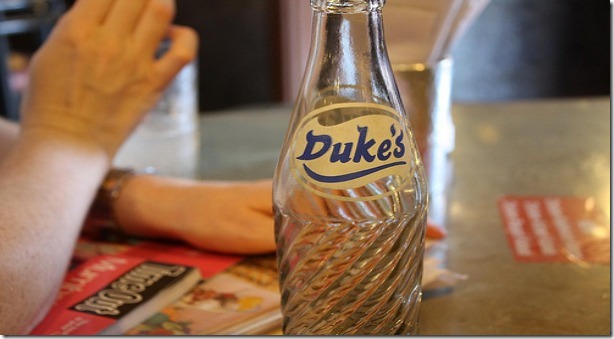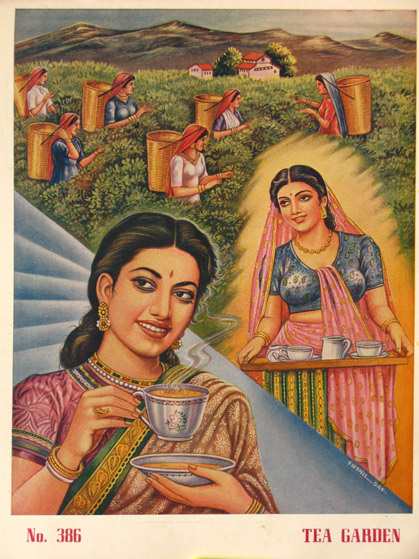Imagine the beaches of Dunkirk. While the allied forces await evacuation, amidst the bullets and bombs, soldiers dig into their ration – for some, it could be the last meal they will ever have. What do they find there? A pack of Britannia biscuits! Intrigued? Do read on. 1/20 

While Churchill mentioned the efforts put in by the allied forces, what is often overlooked is the contribution of Indian soldiers who were also a part of the evacuated forces – a story for another time perhaps. For now, we are interested in little packets of biscuits. 2/20
Packets that the soldiers may have been carrying during those turbulent times in their backpacks on the beaches for Dunkirk, made by a company whose name resonates with each of us. So where does this story begin? 3/20 

We have to go way back to 1892 when a couple of British gentlemen started a small biscuit firm in Calcutta with an initial investment of Rs 295. It was later taken over by the Gupta Brothers who in 1918 formed the Britannia Biscuit Company Limited partnering with C H Holmes. 4/20 

Britannia Biscuits quickly became popular. Steps were taken to scale the business. They became the first enterprise to import & use industrial gas ovens east of the Suez Canal. While this was happening in India, in Britain the biscuit-making business was seeing an overhaul. 5/20
Leading biscuit manufacturers Peek Freans and Huntley & Palmers sought to join hands and form the Associated Biscuit Manufacturers Ltd. This would pave the way for market dominance worldwide. 6/20




They joined hands with Britannia in India setting up a factory on Kasara Pier Road in Bombay in 1924. Britannia biscuits came into the limelight in the 1930s when the government of British India came out with various ads that encouraged the population to drink more tea. 7/20 

With the popularity of tea, beverage biscuits made by Britannia slowly gained popularity. Then came World War II and with it a surprising opportunity to shine. The government needed a continuous supply of biscuits for ration. 8/20
Britannia was entrusted with the task, given their high quality and popularity. To fulfill the demand, the company dedicated most of its supply line, and sales shot through the roof. 9/20 

One could argue that Britannia biscuits were not only present on the beaches of Dunkirk but also present on D-Day on the beaches of Normandy. 10/20
By the 1950s, competitors such as Parle and other local brands entered the market. Britannia successfully consolidated its position by revamping its factories in Bombay and Calcutta, incorporating modern equipment, and diversifying its product line. 11/20
For the next three decades, the company witnessed steady growth making over ₹100 crores in revenues. In 1982, American cookie manufacturer Nabisco Commodities bought out Huntley & Palmer’s shares in Britannia, becoming its biggest shareholder. 12/20
Nabisco, then headed by F. Ross Johnson, partnered with Indian entrepreneur Rajan Pillai. The Wadia group headed by Nusli Wadia also had his eyes on the prize, but Pillai prevailed. Pillai’s takeover of Britannia’s operations in Asia earned him the nickname 'Biscuit Raja.' 13/20 

But Pillai’s reign was not going to last. In what the Economic Times referred to as one of India’s most dramatic corporate sagas, Nusli Wadia partnered with Groupe Danone to take over Pillai’s shares in a bitter boardroom scuffle. 14/20
Under a new regime in the 90s, Britannia tapped into the world of television, with innovative ads and catchy phrases. Some of you may remember the ‘Britannia Khao World Cup Jao’ campaign that promised to take 100 lucky winners to the Cricket World Cup in England in 1999. 15/20
In a cricket-mad country like India, it was like digging into a gold mine. Every packet of a Britannia product would have a certain score. On reaching a score of 100, the packets could be returned to the shopkeeper for a booklet. 16/20 

Now these booklets were a thing of magic containing a fixture list and amazing facts and figures about previous world cups, and much more. It would also have a counterfoil with rectangular patches on them, scratching it would reveal if the person had won anything or not. 17/20
While 100 lucky winners got to see the World Cup many others won other prizes, television sets, signed cricket bats, wrist watches and more. At the end of the campaign, it was estimated that Britannia's profit grew by 37%. 18/20
But more than the numbers, it was that Britannia got the country to fall in love with the game all over again. Young stars and cricket lovers would spend hours with their cricket booklets. Now it seems like a lifetime has passed since then. 19/20
From a small shop in Calcutta to the beaches of Dunkirk and the cricket pitch at Lords, Britannia’s remarkable journey has weathered boardroom scuffles and sturdy adversaries, to bring smiles through its baked goods. Have a Good Day! 20/20
Sources: cnbctv18.com/retail/backsto…
Image attributes: @WikiCommons; britannia.co.in
• • •
Missing some Tweet in this thread? You can try to
force a refresh
















